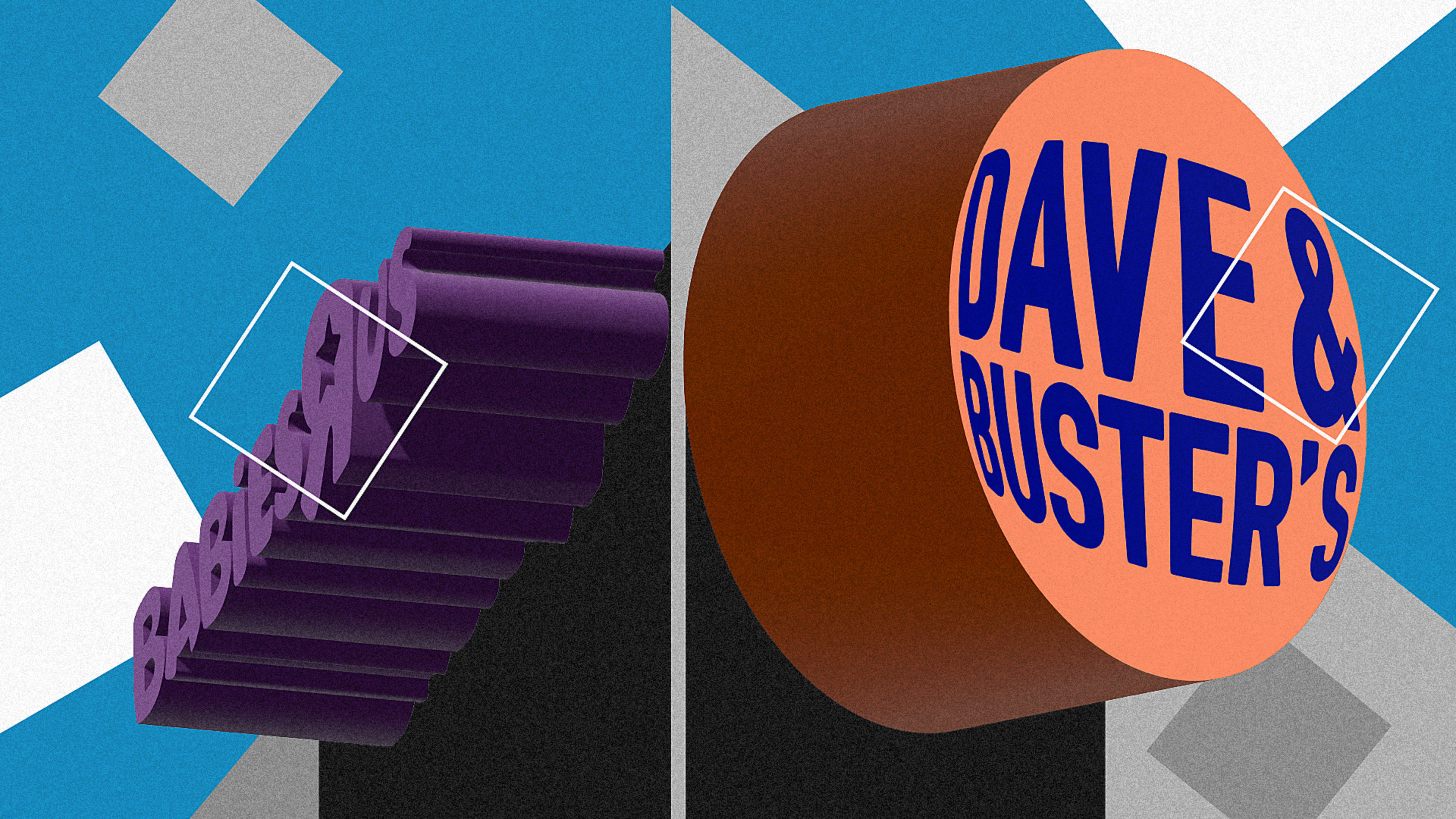In the turbulent and fickle world of retail, designing and opening a store is an act of optimism. So it was that the newborn-focused retailer Babies R Us moved into a newly designed store in Brooklyn in 2000. But the economy can take optimism and smash it to pieces. Fewer than 20 years later, when the company closed all of its physical stores, the Brooklyn Babies R Us became a piece of history, emptied and lost to time.
But now that store has been injected with a fresh sense of optimism, and a new retailer hoping to make a go of it. Dave & Buster’s, an arcade-like bar and restaurant chain geared toward adults, is moving in to fill the void the closed Babies R Us left behind. Uncommonly, the same architects who designed the Babies R Us were called upon again to design the Dave & Buster’s. It’s an unexpected second opportunity to design a space to last. This is the story of how one store turns into another.
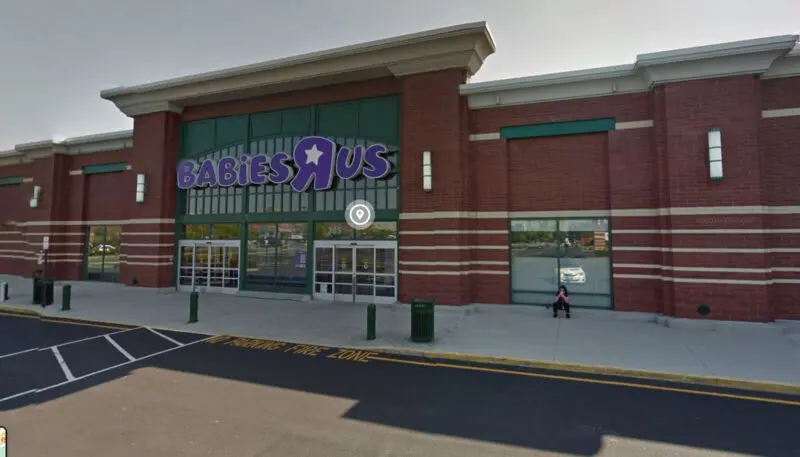
A store is born
“We were one of the main architects in the great Toys R Us rollout,” says Michael LeFande, principal of SBLM’s Long Island office and director of the firm’s retail and commercial studio. In the 1990s, SBLM was hired by the company to help it expand even further, designing prototype stores for two new brands: Kids R Us and Babies R Us.
One of those designs was built in Brooklyn, at the Gateway Center mall, a few miles from John F. Kennedy International Airport. A stand-alone building at the shopping center, it was designed inside and out by SBLM.
“It was a place where mothers—and they geared it a little bit toward women—would feel comfortable shopping. But it also had a little bit of a warehouse feel, so you would feel like you’re getting a bargain,” LeFande says. “You’re not going into a high-level space with finished ceilings and whatnot.”

In 2018, Toys R Us, Babies R Us, and Kids R Us decided to ditch their physical retail stores, more than 800 in total. The store at the Gateway Center mall shut down.
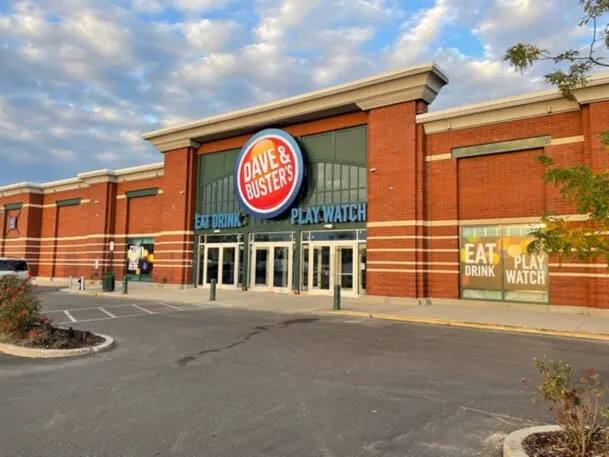
Adult kids in the candy store
A few years ago SBLM got the call from another one of its national chain clients, Dave & Buster’s, a bar-slash-restaurant-slash-arcade. They’d be moving into the former Babies R Us, and needed a redesign for the 21-and-up crowd. LeFande, who’s been with the firm for more than 30 years, was involved in both designs—a somewhat rare second chance at designing the same building. “First of all you have to survive that long as a firm to actually see it come to full fruition,” LeFande says. “Then you have to be old enough like me to be around to see both ends of it.”
Construction started in January 2020 but paused during the height of the pandemic. As of mid-December 2021, the converted baby store reopened as a bar, potentially serving drinks to the very people whose parents went to the same space in the early 2000s to buy their diapers.
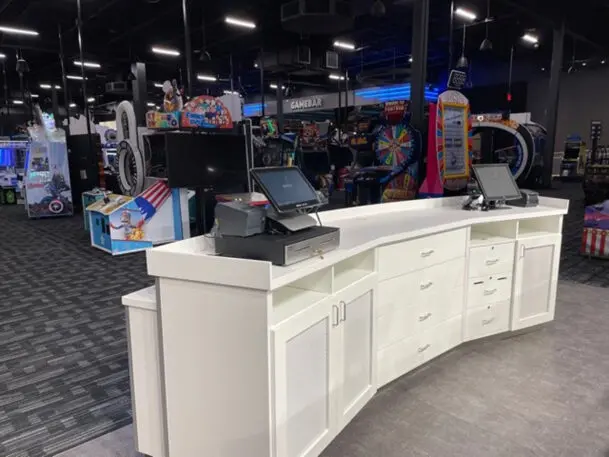
“As you enter the space in this particular store, the arcade sits to the right and the dining and bar area is to the left. They want you to see everything as you come in,” says Nicholas Gargiso, the project manager on the Dave & Buster’s project. “Your eyes light up like a kid in a candy store. Which way do we want to go first?”
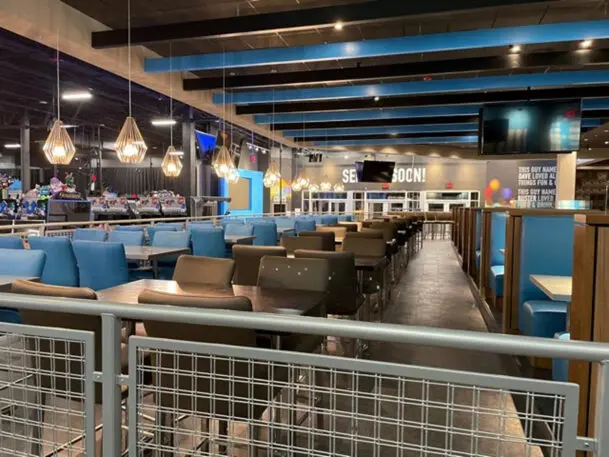
The conversion from one to the other required more than replacing store shelves with bar stools, with its own unique reason. The site of the entire mall is a decommissioned landfill. ” It’s still off-gassing,” Gargiso says. That meant any construction would have to work around piping systems that bring methane up from the decaying garbage below the building’s foundation and out through its roof. Adding plumbing for a bar and restaurant—far more extensive than just the bathrooms a Babies R Us needed—required the architects to raise about 15,000 square feet of the store 2 feet up, tucking the pipes into the void below to keep from breaching the protective foundation and vapor seal holding the landfill’s methane below the surface.
The raised part of the building was an asset in the end, LeFande says, with restaurant and bar space elevated a bit over the cacophony of the arcade below, like stadium seating. “It made for a much more interesting space, actually,” he says.
A wave of conversions
Though the project is unique in some ways, LeFande says these kinds of conversions are becoming a much bigger part of his firm’s work, especially as physical retailers struggle to compete with e-commerce. As commercial architects working with a lot of national chains, the closure of one brand is an opening for another.
“We were one of the main architects for Sears back in the day,” he says of the famed department store that’s seen its physical outlets emptied and redeveloped after it went into bankruptcy in 2018. SBLM is now doing redesigns for other stores it originally designed decades ago. “Same thing with Macy’s. Same thing with Barnes & Noble,” LeFande says, adding, “We got to see our work revamped and have new life brought into it. It’s nice to see the building repurposed and not destroyed.”
But when a group of friends heads out for a night of drinks and arcade games, do they feel like they’re walking into a Babies R Us? “When you go in it’s Dave & Buster’s, full stop. On the outside, unless you knew that was a Babies R Us, I don’t think you do,” Gargiso says. “The fact that the sign used to say Babies R Us is in no one’s mind.”
Recognize your brand’s excellence by applying to this year’s Brands That Matter Awards before the early-rate deadline, May 3.
